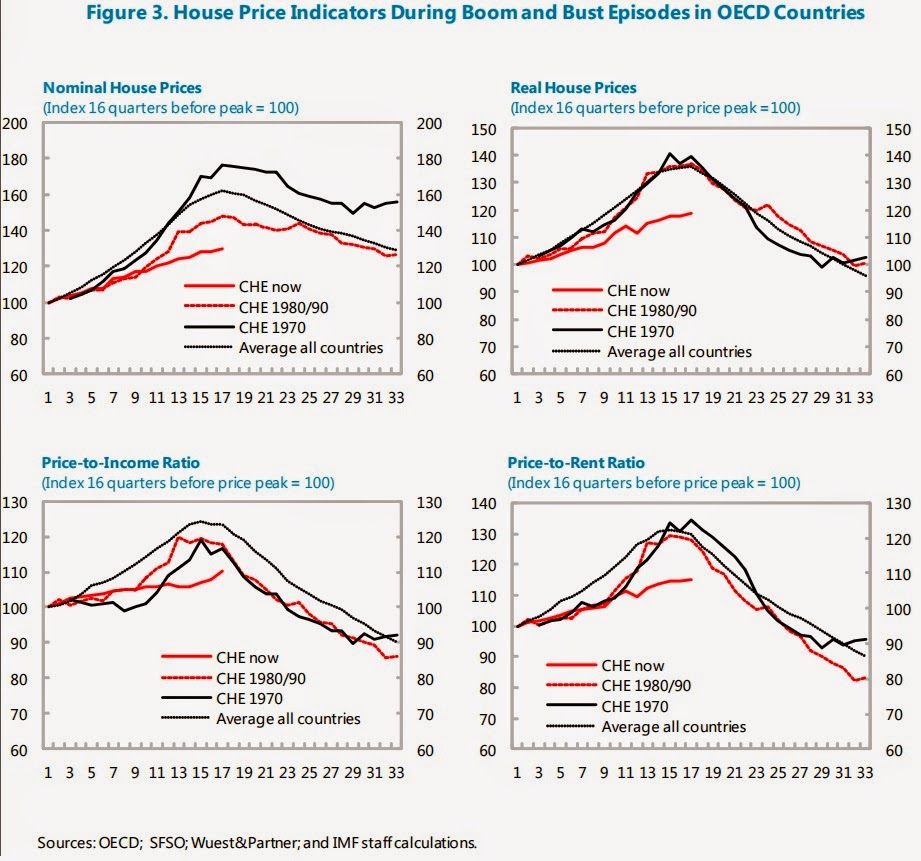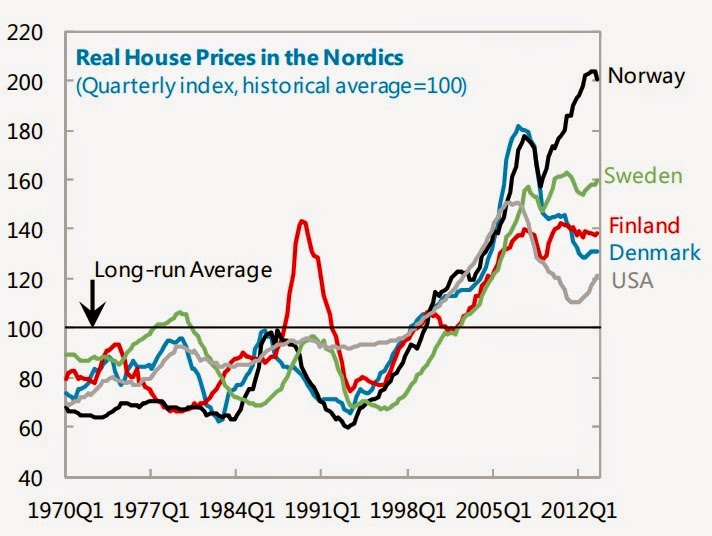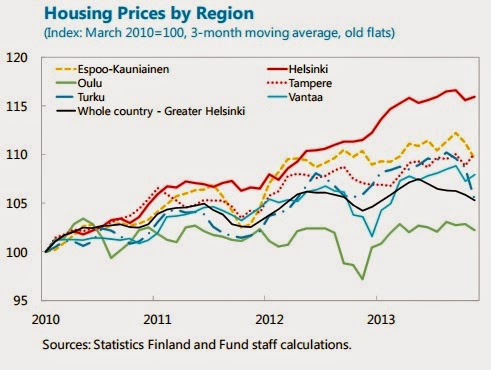Thursday, May 29, 2014
Labor Rewarded
Prakash Loungani profiles Christopher Pissarides, winner of the 2010 Nobel Prize for work on unemployment and labor markets
NOBEL Prize awards for economics sometimes contain a touch of whimsy: they honor people with opposing views—such as the 1974 award to the left-leaning Karl Gunnar Myrdal and the libertarian Friedrich August von Hayek—or reach back to recognize academic achievements long forgotten. The 2010 award was given to a like-minded group: it recognized Peter Diamond, Dale Mortensen, and Christopher Pissarides, whose research coalesced in the 1990s into a workhorse model of unemployment and the labor market. And the time was right. In the aftermath of the Great Recession, 200 million people across the globe were unemployed, and getting them back to work was the most urgent economic policy task.
For Pissarides, a Cypriot of Greek descent, understanding unemployment has been his life’s work since the 1970s. It took 20 years of academic toil before the impact of his research started to transform the way economists think about unemployment—and then for its influence to seep through to policy. IMF chief economist Olivier Blanchard, a noted scholar of unemployment himself, says: “Chris persevered. And history has proven him right. There is an important lesson to researchers here. When you think you are right, don’t listen too much to others.”
Today, with everyone listening to him, Pissarides can use the bully pulpit afforded by the Nobel Prize to help address the unemployment crisis in Europe. He has supported some policies of the so-called troika of lenders—the European Commission, European Central Bank, and International Monetary Fund—but has been an outspoken critic of others (see box). He has been particularly active in his home country of Cyprus, where as head of the national economic council—akin to the Council of Economic Advisers in the United States—he advises the president on issues ranging from bank restructuring to the business model for Cyprus in the future. “Cyprus has some 10 TV channels,” says Pissarides, “and they are all chasing me for my views. Sometimes I want to retreat to my university office and lock the door. But I know if I do that, I will regret it. This is the time to help.”
Continue reading here.
Prakash Loungani profiles Christopher Pissarides, winner of the 2010 Nobel Prize for work on unemployment and labor markets
NOBEL Prize awards for economics sometimes contain a touch of whimsy: they honor people with opposing views—such as the 1974 award to the left-leaning Karl Gunnar Myrdal and the libertarian Friedrich August von Hayek—or reach back to recognize academic achievements long forgotten. The 2010 award was given to a like-minded group: it recognized Peter Diamond,
Posted by at 8:01 PM
Labels: Inclusive Growth
Not Your Father’s Service Sector
Services are gaining newfound respect as the basis of modern global trade
In 1988, General Motors launched an ad campaign with a memorable jingle: “This is not your father’s Oldsmobile. This is the new generation of Olds.” The car’s image had not kept up with its transformation from a staid cruiser to something far more high-tech and stylish. The service sector could use such an ad campaign: it too needs an image makeover to match its transformation over the past decade. The Oldsmobile didn’t make it, but the service sector is here to stay—it already accounts for 60 percent of global employment.
Prejudice against the service sector runs deep. Some regard it as the useless sibling of other sectors of the economy such as agriculture and manufacturing. In The Wealth of Nations, Adam Smith questioned the social value provided by “churchmen, lawyers, physicians, men of letters of all kinds, players, buffoons, musicians, opera-singers, opera-dancers, etc.” To this day, as economist Christina Romer lamented in a New York Times op-ed, there is a “feeling that it is better to produce ‘real things’ than services” (Romer, 2012).
Others have treated services not as socially useless but as somewhat challenged. A famous 1967 paper by U.S. economist William Baumol fostered the view that services is a sector resistant to improvements in productivity. He noted that the provision of services—such as restaurant meals, haircuts, and medical checkups—required face-to-face transactions. These did not lend themselves easily to standardization and trade, the source of growth in productivity and hence income.
This image is no longer a fair representation of the service sector. Service occupations today include a few that even Smith might have considered useful. Trade in services has increased within and across national borders. Many services are now high tech and pay high wages. And increasingly, manufacturing and services, far from being competing siblings, are part of a joint family of value creation. Services are ever more critical to the successful operation of manufacturing, debunking debate over countries’ need to choose between the two sectors.
Services are gaining newfound respect as the basis of modern global trade
In 1988, General Motors launched an ad campaign with a memorable jingle: “This is not your father’s Oldsmobile. This is the new generation of Olds.” The car’s image had not kept up with its transformation from a staid cruiser to something far more high-tech and stylish. The service sector could use such an ad campaign: it too needs an image makeover to match its transformation over the past decade.
Posted by at 7:54 PM
Labels: Inclusive Growth
Wednesday, May 28, 2014
House Prices in Switzerland
“With monetary conditions remaining accommodative and housing prices [in Switzerland] growing faster than incomes, measures to curb mortgage demand especially from the more vulnerable households need to be strengthened,” says the latest IMF’s annual report on Switzerland. Read the report here for a dedicated section on the housing market.
“With monetary conditions remaining accommodative and housing prices [in Switzerland] growing faster than incomes, measures to curb mortgage demand especially from the more vulnerable households need to be strengthened,” says the latest IMF’s annual report on Switzerland. Read the report here for a dedicated section on the housing market.
Posted by at 8:53 PM
Labels: Global Housing Watch
House Prices in Finland
“(…) the level of overvaluation [in house prices in Finland] is lower than in other Nordic countries. However, the national average conceals rapid growth in prices in large metropolitan areas (…),” according to the IMF’s economic report on Finland.
More specifically, it says that “House prices have risen the fastest in metropolitan areas. The pace of house price growth has been pronounced in Helsinki and other highly developed areas despite the crisis, but less so in other regions, especially where there have been declines in manufacturing and industry. Similar dynamics are evident in the relative prices of smaller dwellings compared to larger properties or detached homes, underscoring the upward pressures on house prices in highly populated areas.” The report also talks about macroprudential policies, read the full report here.
“(…) the level of overvaluation [in house prices in Finland] is lower than in other Nordic countries. However, the national average conceals rapid growth in prices in large metropolitan areas (…),” according to the IMF’s economic report on Finland.
More specifically, it says that “House prices have risen the fastest in metropolitan areas. The pace of house price growth has been pronounced in Helsinki and other highly developed areas despite the crisis,
Posted by at 8:01 PM
Labels: Global Housing Watch
House Prices in Colombia
“House prices rose significantly in recent years, fuelled by a robust expansion of income and credit growth and government subsidies. If prices were to fall, banks’ non-performing loans could increase. However, the risk is mitigated by low households’ loan-to-value ratios (about 55 percent), fixed borrowing rates, and a low exposure of banks to mortgage loans. High growth in credit to the private sector, including consumer loans, has been a concern in recent years (IMF Country Report 13/35), but has been abating,” says IMF’s annual economic report on Colombia.
“House prices rose significantly in recent years, fuelled by a robust expansion of income and credit growth and government subsidies. If prices were to fall, banks’ non-performing loans could increase. However, the risk is mitigated by low households’ loan-to-value ratios (about 55 percent), fixed borrowing rates, and a low exposure of banks to mortgage loans. High growth in credit to the private sector, including consumer loans, has been a concern in recent years (IMF Country Report 13/35), but has been abating,”
Posted by at 4:25 PM
Labels: Global Housing Watch
Subscribe to: Posts








